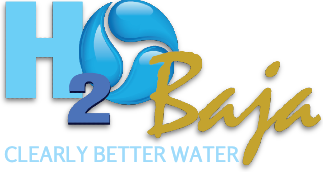Bacteria? What is it and where does it come from? To start with, bacteria are all around you. Everything you touch, eat, smell, kiss, or come in contact with has bacteria. But don’t worry, they probably won’t harm you. You see, bacteria are kind of like cholesterol—there are good ones and bad ones. When it comes to bacteria, the bad ones are called pathogens (disease-causing organisms). These are the guys that want to take us down. Most people are not very interested in the good ones. “Hey, they leave me alone and I leave them alone!” Better yet, “Live and let live!” That’s not really possible because we cannot single out the bad ones and only kill them.
We have the same problem with terrorists—they are mixed in with the good guys, and it is hard to detect and kill them without harming anyone else. But we have one big advantage. We can use “racial profiling” to look for pathogens without fear of the ACLU. So there, Nadine Strossen! Yep, we can test for “Indicator Organisms” such as coliform bacteria.
Coliforms are bacteria that are always present in the digestive tracts of animals, including humans, and are found in their waste. They are also found in plant and soil material. Fecal contamination can cause serious water pollution problems, but it is not practical to test for pathogens in every water sample taken. Coliforms are relatively easy to identify, are usually present in greater numbers than dangerous pathogens, and respond to the environment, wastewater treatment, and water treatment similarly to many pathogens. Because of this, testing for coliform bacteria can be a reasonable indication of whether other pathogenic bacteria are present.
The most basic tests for bacterial contamination in a water supply are for total coliform, fecal coliform, and Escherichia coli (E. coli):
- Total coliforms include bacteria that are found in the soil, water influenced by surface water, and human or animal waste. Why does this matter? Well, if your water tests positive for total coliform, there is a good chance that there is some breach in the integrity of your water supply. Broken pipes are notorious for allowing contamination (such as from a cow pasture) caused by runoff to enter your water supply.
- Fecal coliforms are a subgroup of the total coliforms that are found in the gut and feces of warm-blooded animals. They are considered to be a more accurate indicator of human or animal waste than total coliforms.
- Escherichia coli (E. coli) is the major species in the fecal coliform group and is generally not found growing and reproducing in the environment. So, it is considered to be the best indicator of fecal pollution and the possible presence of pathogens.
What all this means is that testing your water is the only way to know if your water is safe. You can’t tell by the look, taste, or smell of the water if disease-causing organisms are in it.
It is pretty basic, have your water tested for bacteria at least once a year and see what you’ve got. The best time to test is during the hurricane season or wet season. That’s when you have the greatest risk of coliform contamination. If the results show total coliforms, it’s time to consult an expert to find out what’s going on.
Those of you who are only here part of the year are more likely to have problems. Your plumbing, water heater, dishwasher, carbon filters (carbon is food for bacteria), etc., are perfect places for bacteria to multiply while you are away, so when you return home, at the very least flush your pipes out.
Most water problems can be easily solved. So don’t put it off—test your water. Why bathe in water you wouldn’t drink?
